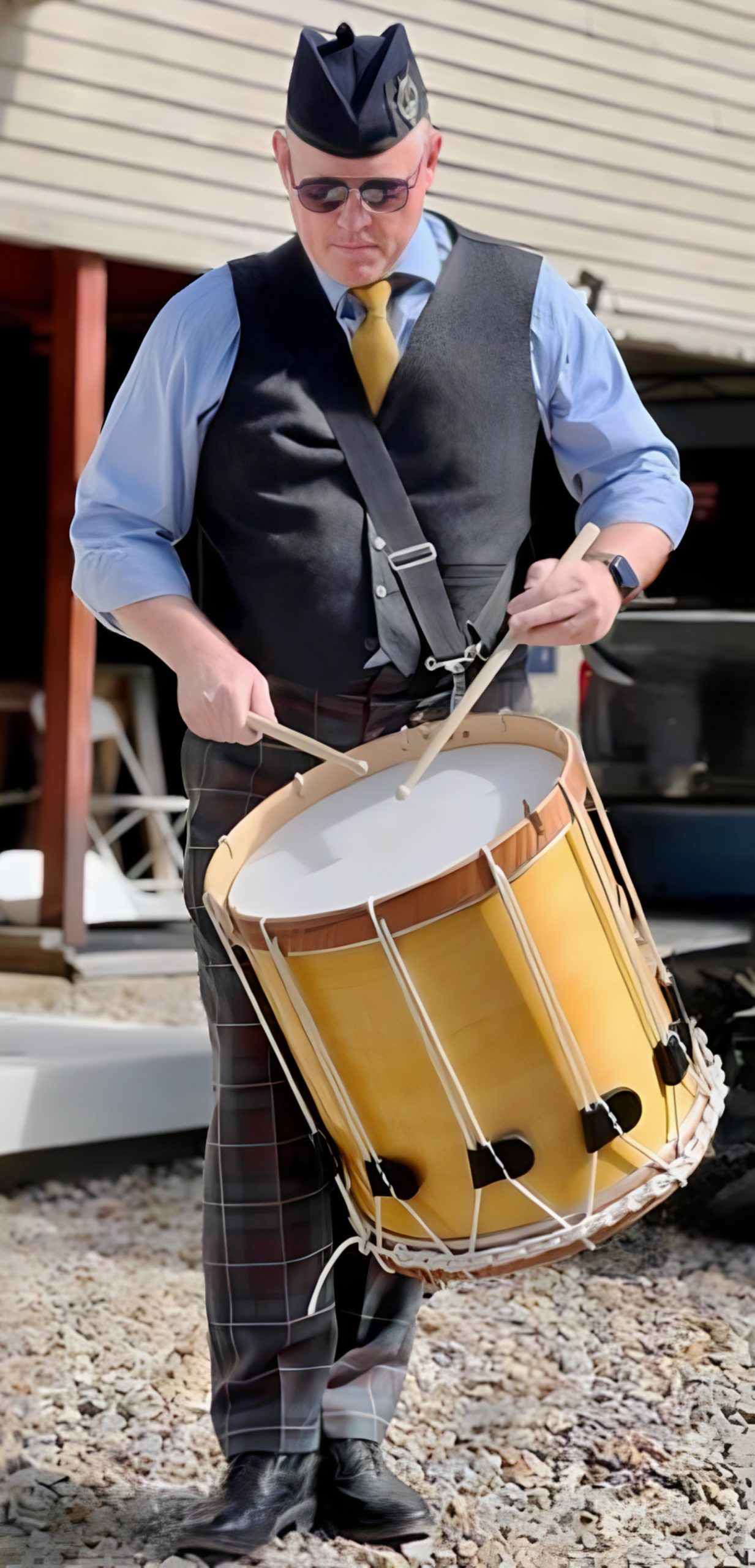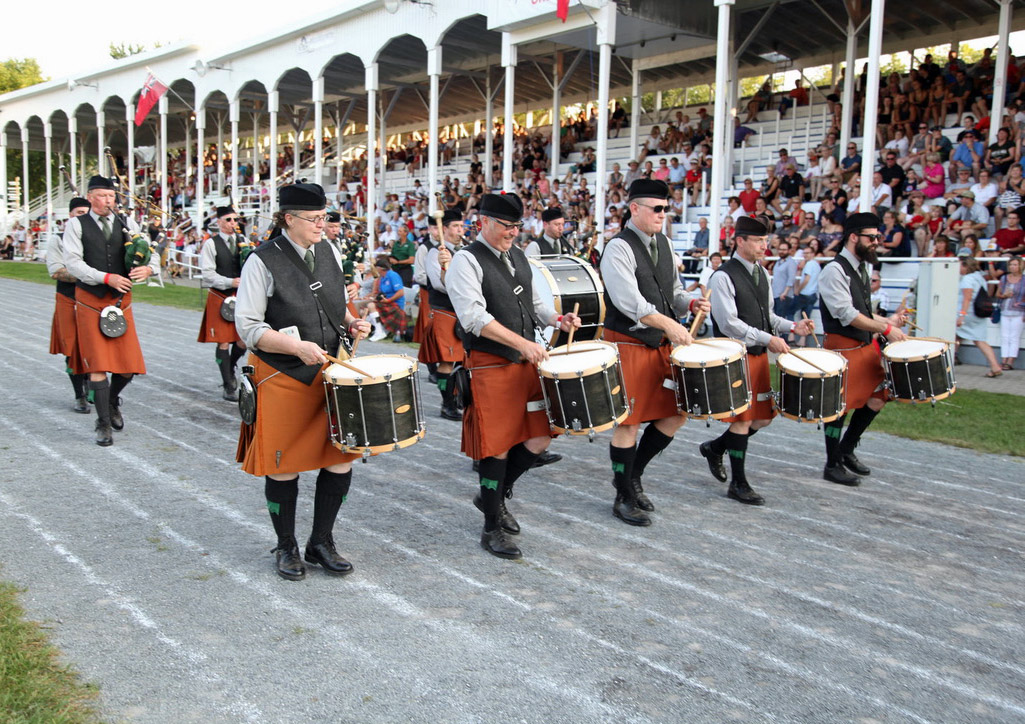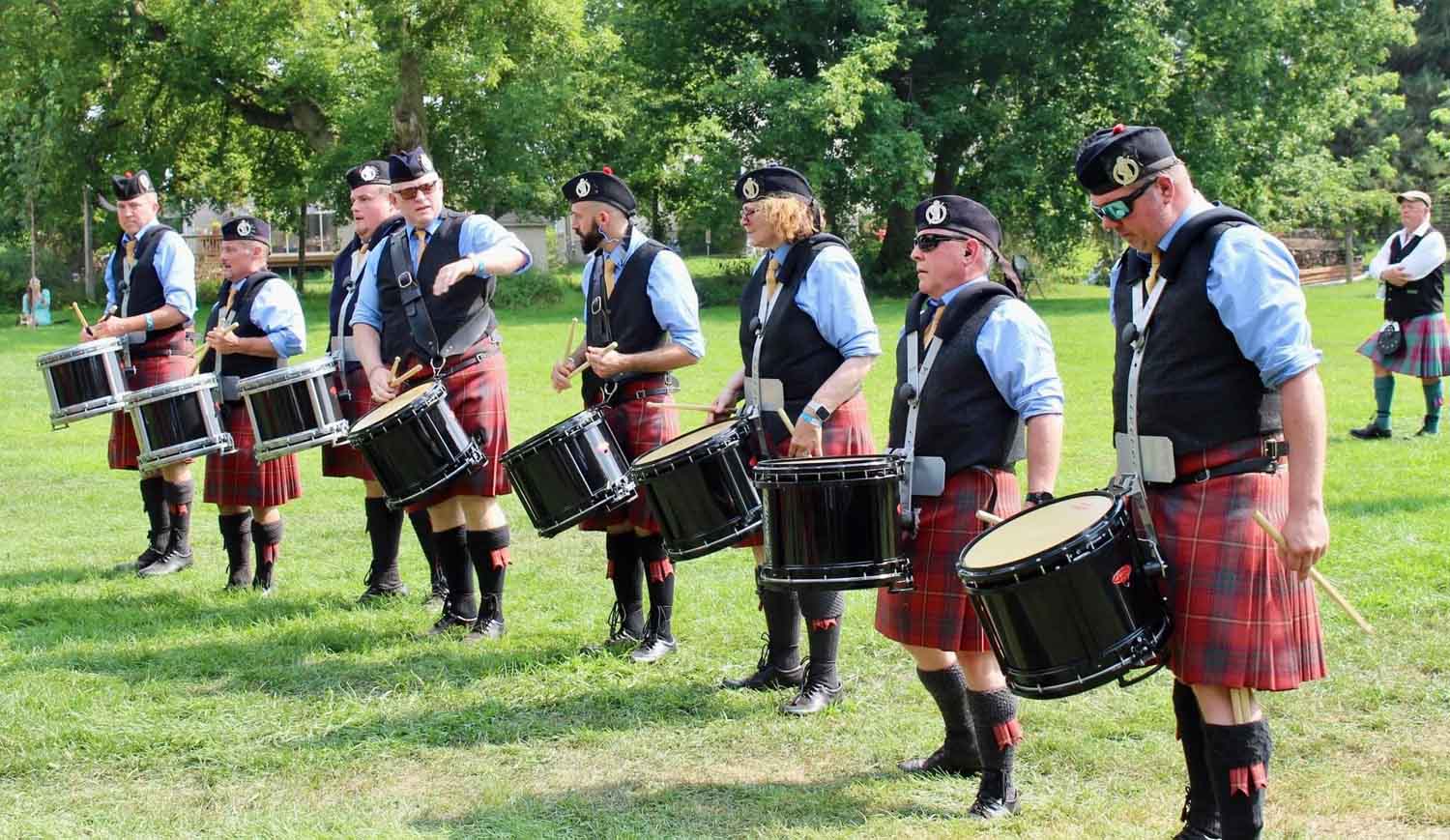Opinion: Pipe band snare pitch: A perspective on sound
pipes|drums has frequently discussed a desire for more variety in our music. We were pleased to receive this illuminating opinion piece from one of the world’s best pipe band drummers. The opinions expressed are not those of pipes|drums. They are presented here to create constructive dialogue and, if it makes sense for the piping and drumming community at large, positive change.
Pipe band snare pitch: A perspective on sound
By Scott Armit

This is not an article waxing poetic about the “good old days,” nor is it necessarily an argument that the modern pipe band snare drum sound is bad or wrong. Instead, this is a call to reflect on how we judge snare line sound, particularly in the context of pitch, tension, and tone.
And now that I’ve raised the spectre of judging, let me be clear: this is not a critique of the adjudicators themselves. Instead, it’s about a typical comment on critique sheets — phrases like “snare line flat” or “snare pitch not matching the pipes.”
I’d argue: there should be no such thing.
Unpitched instruments . . . by design
A snare drum is an unpitched instrument, and always has been. There’s no defined note or tonal center, just percussive clarity, attack, and timbre.
This is especially true in pipe bands. Our snares are the highest-tensioned marching drums in any musical tradition. They are cranked beyond what most other genres consider playable, even beyond Drum Corps International, which comes in a distant second.
We should ask: Is the goal to sound the same as everyone else, or to sound great, even if that sound is distinct?
At this level of tension, the notion of “pitch” becomes functionally meaningless. These drums are specifically engineered to eliminate tonal resonance, not emphasize it. So, how can a snare drum be considered “flat”? Relative to what?
If the answer is “relative to other bands,” then we should ask: Is the goal to sound the same as everyone else, or to sound great, even if that sound is distinct?

Historical context: pipes and drums
Let’s zoom out.
In the pre-1932 era, before Premier introduced rod-tension drums, pipe bands used rope-tension drums with calfskin heads. These were thunderous, dark, and low in tone — certainly “flat” by today’s standards.
Yet, paired with bright Highland pipes (or fifes in fife and drum corps), they created a dynamic and powerful contrast. The instruments complement each other rather than match in pitch, which is impossible anyway.
Fast-forward to the 1980s. Kevlar heads changed everything. Suddenly, tension could be extreme. Drum manufacturers responded by developing shells and hardware to withstand these forces, and the pipe band world embraced the high-tension snare, the same core design we use today with heads that seem practically unbreakable.
But while snare tension escalated rapidly, bagpipe pitch rose slowly.
Bagpipe pitch over time
Historical studies and audio analysis show the pitch of the Highland bagpipe has indeed climbed, but only modestly:
- Late 1800s: ~440 Hz (concert A)
- 1950s: ~460 Hz
- Today: ~480+ Hz
That increase, across 140-plus years, amounts to roughly 1.5 semitones — from A4 to somewhere between A#4 and B. That’s a noticeable shift, but hardly dramatic.
Compare that to the change in snare drum design: from a rope-tension, midrange instrument with tonal depth to a near toneless strike pad. It’s not subtle. Yet somehow, drummers whose corps tune even slightly lower than others are critiqued for sounding “flat.”

What “flat” actually means
Let’s go back to some recent iconic drum corps: the 1987 78th Fraser Highlanders, Shotts & Dykehead Caledonia in the 1990s, to name a couple. Ask many drummers today what their favourite drum corps of all time might be, and you’ll hear these names repeated again and again. Why? Beyond the obvious fantastic playing, you’ll find a snare drum sound that has body, clear and crisp articulation, and a rich unchoked tone.
No one, then or now, would say they didn’t complement the pipes. And yet, by today’s standard of ultra-high tension, those sounds would absolutely be deemed “flat.”
So, what are we really listening for?
A better standard
Rather than rewarding maximum tension and “sameness,” we should reward:
- Uniformity within the line
- Quality of sound
- Blend and balance with the pipe corps
Judging snare pitch based on how “cranked” a line is encourages homogeneity over artistry. The goal should be a great sound, not solely a high one.
Conclusion
Let’s not reduce a drum corps’ musical contribution to how tightly they’ve tuned their heads. Let’s celebrate variety, innovation, and excellent sound—even when it dares to be different.
If Highland pipes have moved only 1.5 semitones in over a century, perhaps our ears and judges can also embrace a little range in our drums.
Scott Armit is the lead-drummer of the Commonwealth Pipes & Drums of Boston, and was previously the lead-drummer of the Stuart Highlanders, taking his drum section to winning the Grade 2 qualifier at the 2011 World Championships, and helping the band to a fifth place overall in the final. He won multiple North American Professional Solo Drumming Championships in the 1990s and 2000s, and took the Manchester Pipe Band drum corps to a win in Grade 2 at the 1995 World’s. He’s a former Eastern United States Pipe Band Association panel judge. He lives in Boston.
Further information
A Brief History of the Marching Drum
Has Bagpipe Pitch Gone Too High?
What do you think? We always welcome your fair opinions, so please feel free to use our Comments tool below, which is available to all registered readers and subscribers.



Interesting article. Great points. Nice work Scott.
That was a really interesting read!
To me, given the very advanced techniques possible within our art, the requirement of the tone should also be, that every note should be clearly heard.
This is not always the case, sometimes because of rough playing of course, but the tone of a drum can clearly influence, the audible quality of the playing coming out of the drum corps.
I would argue though, that in these cases it’s mainly due to loose bottom or top shares – or both.
A truly interesting approach to side drumming in pipe bands might be to move beyond the traditional lead tip/encore of the first and second parts and start to move more towards what the pipes are doing where we have multiple parts playing differently on the snares.
Would that sound a mess? Perhaps it might, but like multi-tonal tenor drums, could alternative parts be put on different toned snares and try something really strikingly different?
While we’re at it, can we go back to the 70s/80s and get rid of the preponderance of endless singles…. 😉
Great points, Scott. Kevlar was just coming in when I joined up back in the 70’s and boy did we crank them down. And, given the parallel growth of the Duthart style and writing, it really did seem to all fit. Now, with the evolution of drum head material and drum design, itself, here we are, for better or worse, with uber tuned corps.
Not to muddy the subject, but I also find it interesting the raising of the bass drum pitch over the years. At the World’s, I even heard some tenors pitched lower than the bass. IMHO, this tuning makes it more a part of the tenor corps than providing the unique and singular bass sound and accompaniment that I feel adds so much more. I wonder what started that trend.